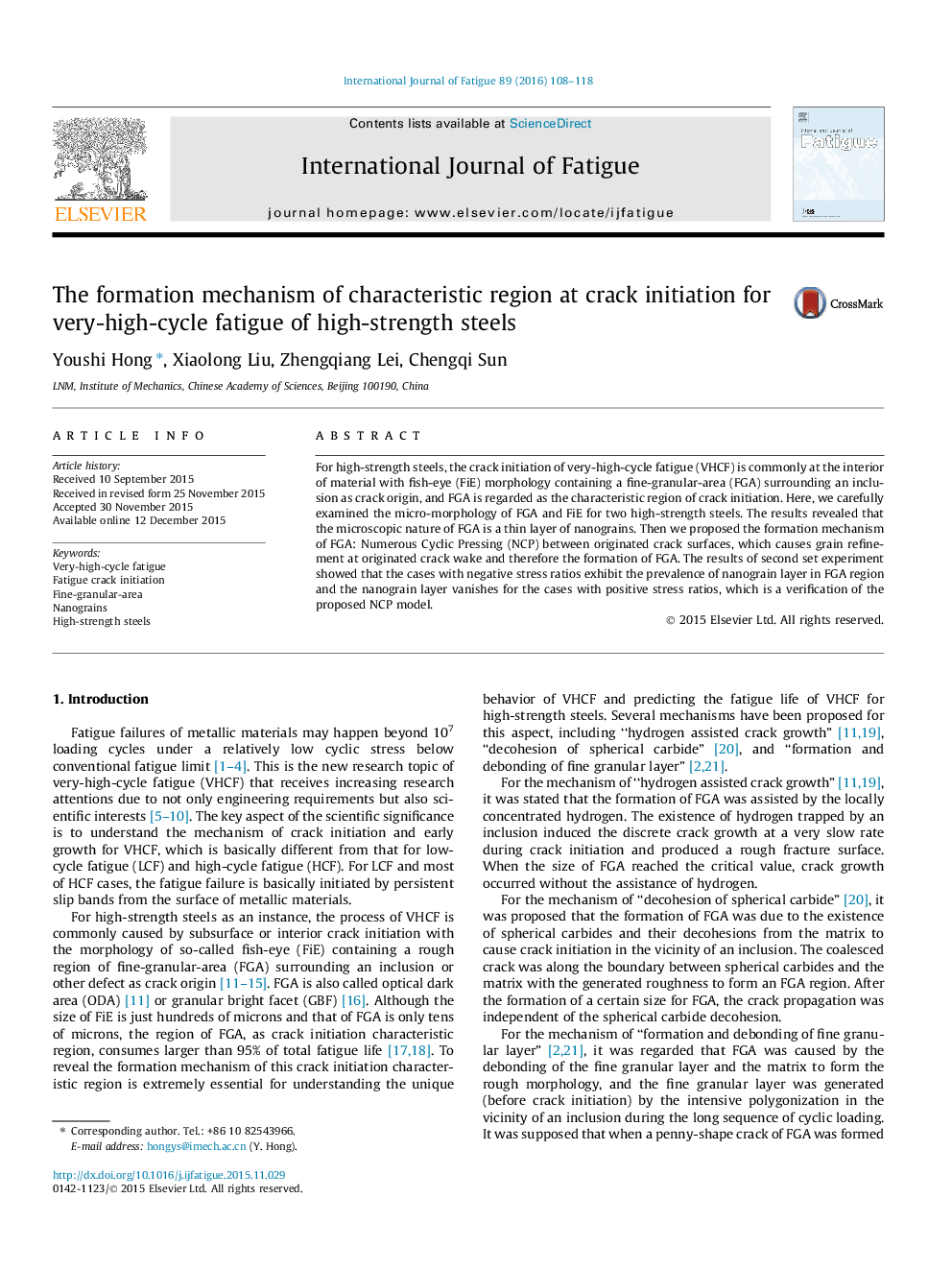| کد مقاله | کد نشریه | سال انتشار | مقاله انگلیسی | نسخه تمام متن |
|---|---|---|---|---|
| 774832 | 1463740 | 2016 | 11 صفحه PDF | دانلود رایگان |
• FGA is a nanograin layer of 500–800 nm thick with grain size of 50 nm.
• Nanograin layer exists in both sides of fracture surface of FGA region.
• Nanograins form at crack wake via contacting between originated crack surfaces.
• Nanograins present for negative stress ratio cases, but vanish for R > 0 cases.
• Proposed Numerous Cyclic Pressing model explains FGA formation.
For high-strength steels, the crack initiation of very-high-cycle fatigue (VHCF) is commonly at the interior of material with fish-eye (FiE) morphology containing a fine-granular-area (FGA) surrounding an inclusion as crack origin, and FGA is regarded as the characteristic region of crack initiation. Here, we carefully examined the micro-morphology of FGA and FiE for two high-strength steels. The results revealed that the microscopic nature of FGA is a thin layer of nanograins. Then we proposed the formation mechanism of FGA: Numerous Cyclic Pressing (NCP) between originated crack surfaces, which causes grain refinement at originated crack wake and therefore the formation of FGA. The results of second set experiment showed that the cases with negative stress ratios exhibit the prevalence of nanograin layer in FGA region and the nanograin layer vanishes for the cases with positive stress ratios, which is a verification of the proposed NCP model.
Figure optionsDownload as PowerPoint slide
Journal: International Journal of Fatigue - Volume 89, August 2016, Pages 108–118
